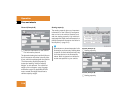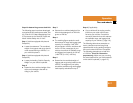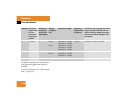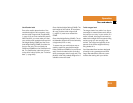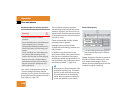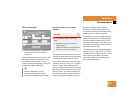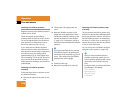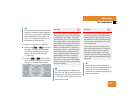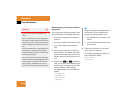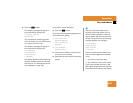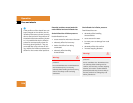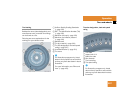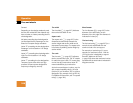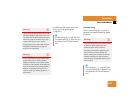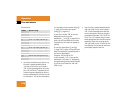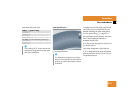
324
Operation
Tires and wheels
Reactivating the tire pressure monitor-
ing system
The tire pressure monitoring system must
be reactivated in the following situations:
ț If you have changed the tire inflation
pressure
ț If you have replaced the wheels or tires
ț If you have installed new wheels or
tires
̈ Using the tire placard on the driver’s
door B-pillar or, if available, the inside
of the fuel filler flap, make sure the tire
inflation pressure of all four tires is cor-
rect.
̈ Press button j or k repeatedly
until you see the current inflation pres-
sures for each tire appear in the multi-
function display or the following
message appears in the multifunction
display:
Tire pressure
displayed only
after driving
a few mins.
̈ Press the reset button on the instru-
ment cluster (
୴ page 24).
The following message will appear in
the multifunction display:
Check current
tire pres.?
Warning! G
Follow recommended tire inflation pres-
sures.
Do not overinflate tires. Overinflating tires
can result in sudden deflation (blowout) be-
cause they are more likely to become punc-
tured or damaged by road debris, potholes,
etc.
Do not underinflate tires. Underinflated tires
wear unevenly, adversely affect handling
and fuel economy, and are more likely to fail
from being overheated.
Do not overload the tires by exceeding the
specified vehicle capacity weight (as indicat-
ed by the label on the pillar in the driver’s
door opening). Overloading the tires can
overheat them, possibly causing a blowout.
i
If you are transporting a deflated tire in
the vehicle, do not activate the tire
pressure monitoring system until
ț the deflated tire is no longer in the
vehicle
ț you have inflated the tire to the cor-
rect pressure



